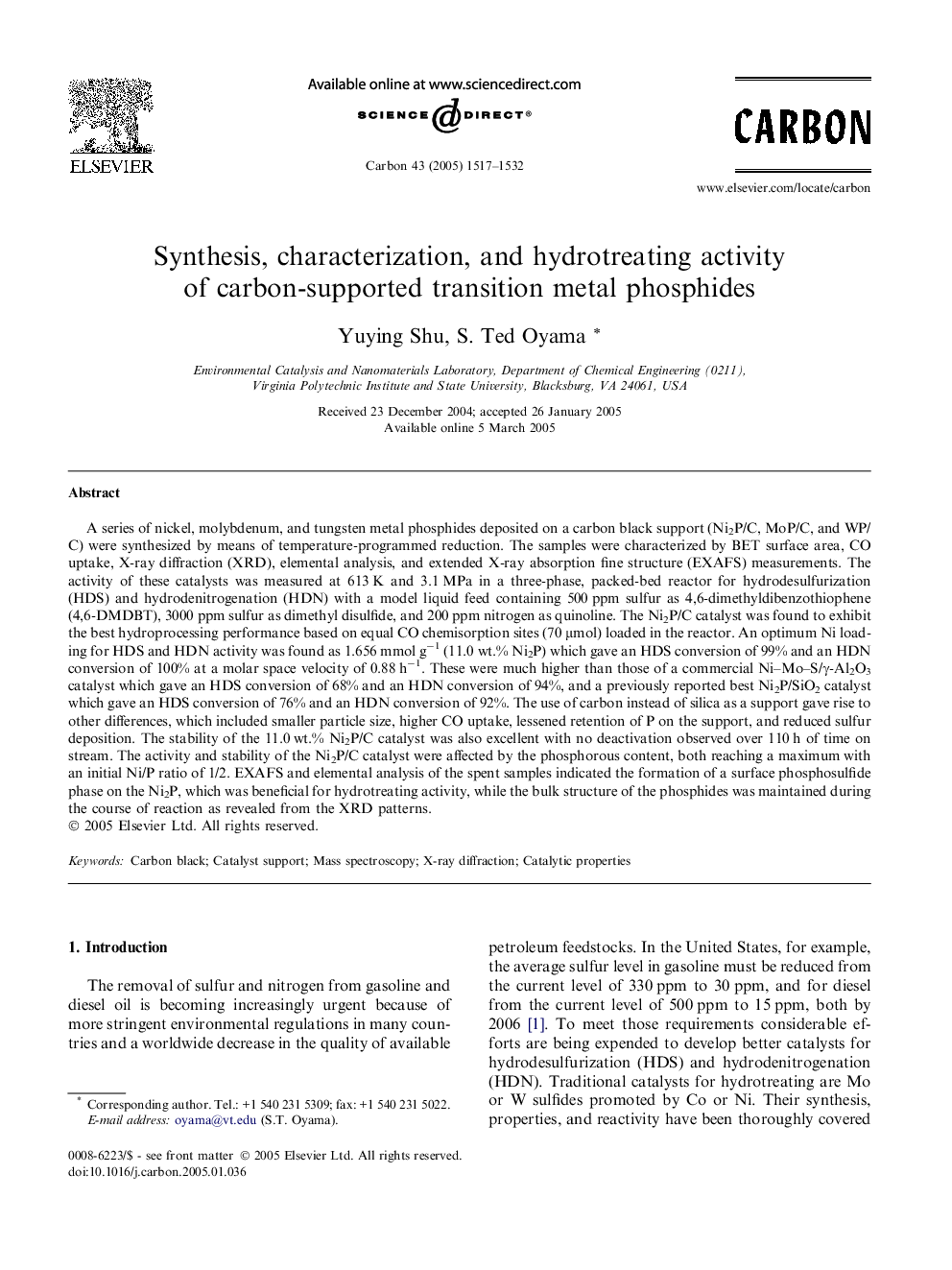| Article ID | Journal | Published Year | Pages | File Type |
|---|---|---|---|---|
| 10611294 | Carbon | 2005 | 16 Pages |
Abstract
A series of nickel, molybdenum, and tungsten metal phosphides deposited on a carbon black support (Ni2P/C, MoP/C, and WP/C) were synthesized by means of temperature-programmed reduction. The samples were characterized by BET surface area, CO uptake, X-ray diffraction (XRD), elemental analysis, and extended X-ray absorption fine structure (EXAFS) measurements. The activity of these catalysts was measured at 613 K and 3.1 MPa in a three-phase, packed-bed reactor for hydrodesulfurization (HDS) and hydrodenitrogenation (HDN) with a model liquid feed containing 500 ppm sulfur as 4,6-dimethyldibenzothiophene (4,6-DMDBT), 3000 ppm sulfur as dimethyl disulfide, and 200 ppm nitrogen as quinoline. The Ni2P/C catalyst was found to exhibit the best hydroprocessing performance based on equal CO chemisorption sites (70 μmol) loaded in the reactor. An optimum Ni loading for HDS and HDN activity was found as 1.656 mmol gâ1 (11.0 wt.% Ni2P) which gave an HDS conversion of 99% and an HDN conversion of 100% at a molar space velocity of 0.88 hâ1. These were much higher than those of a commercial Ni-Mo-S/γ-Al2O3 catalyst which gave an HDS conversion of 68% and an HDN conversion of 94%, and a previously reported best Ni2P/SiO2 catalyst which gave an HDS conversion of 76% and an HDN conversion of 92%. The use of carbon instead of silica as a support gave rise to other differences, which included smaller particle size, higher CO uptake, lessened retention of P on the support, and reduced sulfur deposition. The stability of the 11.0 wt.% Ni2P/C catalyst was also excellent with no deactivation observed over 110 h of time on stream. The activity and stability of the Ni2P/C catalyst were affected by the phosphorous content, both reaching a maximum with an initial Ni/P ratio of 1/2. EXAFS and elemental analysis of the spent samples indicated the formation of a surface phosphosulfide phase on the Ni2P, which was beneficial for hydrotreating activity, while the bulk structure of the phosphides was maintained during the course of reaction as revealed from the XRD patterns.
Related Topics
Physical Sciences and Engineering
Energy
Energy (General)
Authors
Yuying Shu, S. Ted Oyama,
